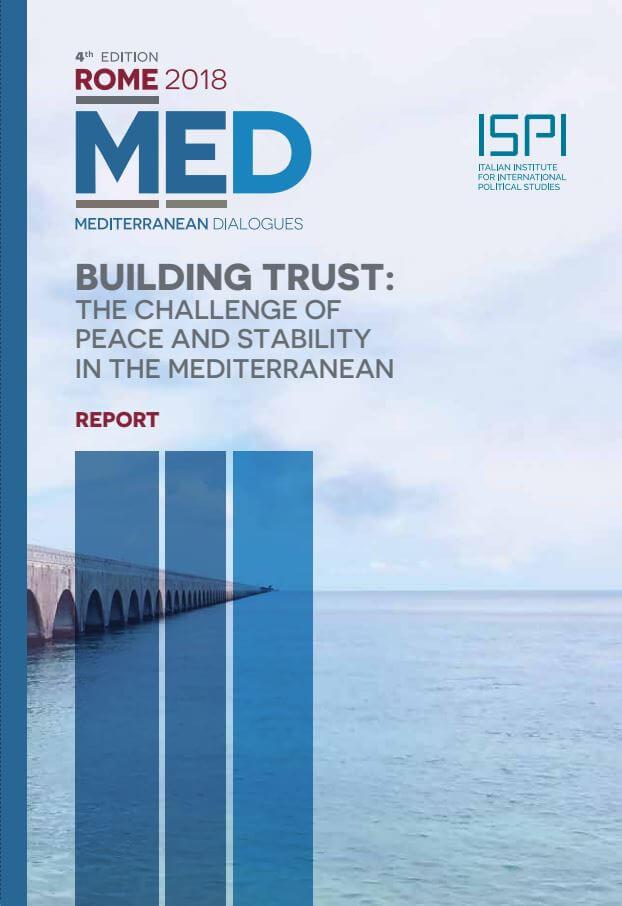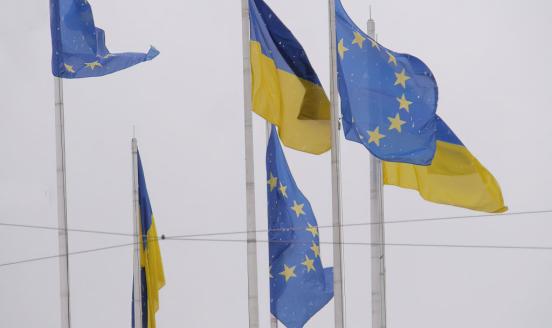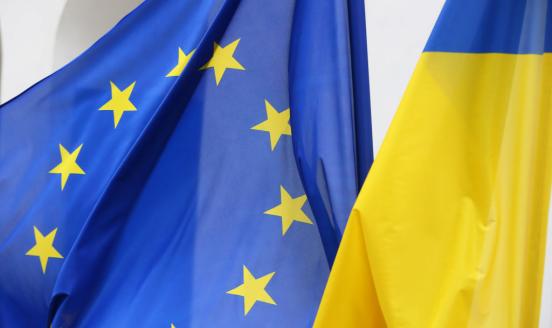Economic policy challenges in Southern and Eastern Mediterranean
For a long time, southern and eastern Mediterranean countries struggled with serious socio-economic challenges and dysfunctional economic systems and

This blog was prepared for the Rome MED – Mediterranean Dialogues report 2018.

For a long time, southern and eastern Mediterranean countries (henceforth SEMC)[1] struggled with serious socio-economic challenges and dysfunctional economic systems and policies. In the 2010s their macroeconomic performance further deteriorated due to the global and European financial crises, the decline of commodity prices, and the failure of the Arab Spring, which triggered a new wave of intra-regional conflicts and added to the already high geopolitical and security risks. Finally, the badly needed economic and governance reforms progress at a slow pace.
Slow growth, high unemployment, and macroeconomic fragility
Although the rate of GDP growth remains positive, it markedly slowed down in the 2010s (Figure 1). In per-capita terms, it is close to stagnation (Algeria and Tunisia) or even negative (Jordan and Lebanon) given rapid population growth in the region. That is, it is insufficient to generate enough jobs for the rapidly growing labour force and to eradicate poverty.
Unemployment rates remain high, especially for youths (Table 1). This creates serious risks of social and political instability in the entire region. However, in Tunisia, the only emerging democracy in the region, these risks are particularly high. Slow growth, high unemployment, macroeconomic disequilibria and insufficient economic reforms can undermine the political gains of the 2010-2011 revolution.
Looking at other macroeconomic indicators one notices no progress in fiscal consolidation, disinflation and improving external balances. This makes all SEMC vulnerable to economic and political shocks regardless of their origin (global, regional or domestic).
Large fiscal imbalances and growing public debt
All countries continue to run large and, in most cases, increasing general government (GG) deficits (Table 2) which reflects a lack of progress in revenue collection and reducing expenditure. Only Jordan and Morocco managed to reduce deficits in 2015-2017. The lower deficit of Algeria in 2017 resulted from the recovery of oil prices.
Consequently, the gross GG debt-to-GDP ratio continues to grow everywhere. In 2017, it amounted to 152.8% in Lebanon, 103.3% in Egypt, 95.6% in Jordan, 71.3% in Tunisia and 64.4% in Morocco. Only Algeria’s gross debt stayed lower, at 25.8% of GDP, but net debt (gross debt minus central bank reserves and government liquid assets) has increased by roughly 50% of GDP since 2014. Such high debts make most SEMC dependent on concessionary financing.
Inflationary pressures and external imbalances
Furthermore, the engagement of central banks in financing fiscal deficits leads to higher inflation. In Egypt, where one-digit annual inflation was a rare phenomenon in the past, it skyrocketed to almost 30% in 2017, as a result of devaluation of the Egyptian pound and an increase of energy prices – a part of the IMF-sponsored reform package. It may come down in 2018-2019 if reforms succeed.
Current account deficits have widened everywhere except Morocco and Jordan (Figure 2) and remain high (except Morocco) as a result of lower commodity prices, decreasing tourism revenue, and lax fiscal policies (twin deficits).
Slow reforms despite IMF programmes
Slow growth and imbalances reflect limited progress in economic reforms. While between 2013 and 2016 energy subsidies – the key item responsible for large fiscal deficits, and the main cause of energy inefficiency[2] – were reduced everywhere except Lebanon (Figure 3), this happened largely due to the fall in international energy prices. Adjustment of domestic prices played a less important role and, in some cases (Lebanon, Jordan), it even reduced the positive effect of change in international prices (by decreasing consumer prices).
Energy subsidies are generated by administrative price controls. The same applies to food subsidies, which constitute another important expenditure item in Tunisia and Egypt. Increases in administrative prices or utility tariffs, even if motivated by changes in import price or depreciation of domestic currency, usually meet political resistance. Therefore, price liberalisation or establishing an automated adjustment formula (in case of utility tariffs) is the only solution to remove subsidies in a sustainable way. However, few SEMC decided to go so far yet.
The public-sector wage bill constitutes another large expenditure item in SEMC, especially in Algeria[3] and Tunisia[4], despite the rather poor quality of public services. This is a consequence of considering public employment as a social protection measure. Again, not much progress has been noticed in this respect.
Figure 4 shows high military expenditure in SEMC except Tunisia and, perhaps surprisingly (given the dominant role of the army in the country’s political system), Egypt. This may be explained by regional security risks, unresolved conflicts and the authoritarian character of political regimes. Nevertheless, it also points to the potential of a peace dividend once political conflicts in the region are resolved.
Interestingly, Tunisia (since 2016) and Egypt (since 2017) have adopted ongoing medium-term IMF programmes (the Extended Fund Facility), but their fiscal and structural reform targets are not particularly ambitious. They aim at avoiding further deterioration of fiscal and external accounts rather than their substantial improvement. As illustrated by respective programme projections, both countries will continue to have high public debt at the end of the programme’s life.[5] Therefore, their access to private financial markets on good terms may be problematic.
Long-term challenges
SEMC also face numerous structural and institutional obstacles to sustainable, more balanced and socially just economic growth. The private sector, which can generate higher growth and more jobs, struggles with bureaucratic barriers, corruption, poor governance and outdated regulations. Most countries continue to restrict foreign investment and convertibility of their currencies even for current-account transactions.
Intra-regional trade remains limited despite the signature of numerous trade agreements.[6] Trade relations with the EU, the main economic partner, have not progressed beyond the free trade agreements signed in 1990s and 2000s, with an agenda usually limited to manufacturing products and tariff barriers. Only Morocco[7] and Tunisia[8] started negotiations on the Deep and Comprehensive Free Trade Area with the EU although they are far from concluding.
Poor education systems in the region are unable to offer the young labour force the knowledge and skills required by a modern economy. Most SEMC struggle with remaining pockets of illiteracy and early drop-out from the school system. The low level of female labour-market participation (between 15% in Jordan and 27% in Tunisia in 2017) is another factor that decreases potential growth.
The way ahead: acceleration of reforms
Unless economic and governance reforms are accelerated, SEMC have little chance to get out of a low growth trap and address their socio-economic problems – such as high youth unemployment, low female labour-market participation, poverty, low-quality education, underdeveloped infrastructure, and poor business and investment climate.
They also risk public-debt and balance-of-payments crises. SEMC need assistance from the international financial and development institutions and developed countries – in the first instance, from the EU. Such aid, both financial and technical, should be strictly conditional on progress in economic, political and governance reforms. Resolving regional conflicts could also help the economic and social agenda by offering a substantial peace dividend.
[1] This analysis covers Algeria, Egypt, Jordan, Lebanon, Morocco and Tunisia. There is no reliable data for Libya and Syria due to ongoing civil wars.
[2] IMF ‘If Not Now, When? Energy Price Reform in Arab Countries’, IMF staff report prepared for Annual Meeting of Arab Ministers of Finance, Rabat, Morocco, 2017, http://www.imf.org/~/media/Files/Publications/DP/2017/GCC-Energy-Pricing-Reforms.ashx
[3] IMF ‘Algeria: 2018 Article IV Consultation-Press Release; Staff Report; and Statement by the Executive Director for Algeria’, IMF Country Report, No. 18/168, 13 June 2018, p. 27, http://www.imf.org/~/media/Files/Publications/CR/2018/cr18168.ashx
[4] IMF ‘Tunisia: Third Review under the Extended Fund Facility, and Request for Waiver of Applicability and Modification of Performance Criteria’, IMF Country Report, No. 18/218, July 2018, p. 28, http://www.imf.org/~/media/Files/Publications/CR/2018/cr18218.ashx
[5] IMF ‘Arab Republic of Egypt: Third Review Under the Extended Arrangement Under the Extended Fund Facility, and Requests for a Waiver of Nonobservance of a Performance Criterion and for Modification of a Performance Criterion-Press Release, Staff Report; and Statement by the Executive Director for the Arab Republic of Egypt’, IMF Country Report, No. 18/213, July 2018, http://www.imf.org/~/media/Files/Publications/CR/2018/cr18213.ashx; IMF, 2018b, Tunisia: Third Review under the Extended Fund Facility, and Request for Waiver of Applicability and Modification of Performance Criteria, IMF Country Report, No. 18/218, 10 July 2018, http://www.imf.org/~/media/Files/Publications/CR/2018/cr18218.ashx
[6] F. Biondi and M. Demertzis ‘Promoting intra-regional trade in the southern Mediterranean’, in: V.Talbot and S. M. Torelli (eds.): Looking Ahead: Charting New Path for the Mediterranean, Italian Institute for International Political Studies (ISPI), Mediterranean Dialogues, Report, Rome, 2017, https://www.ispionline.it/sites/default/files/media/img/rapporto_med_ispi_2017.pdf
[7] http://ec.europa.eu/trade/policy/countries-and-regions/countries/morocco/
[8] http://ec.europa.eu/trade/policy/countries-and-regions/countries/tunisia/



